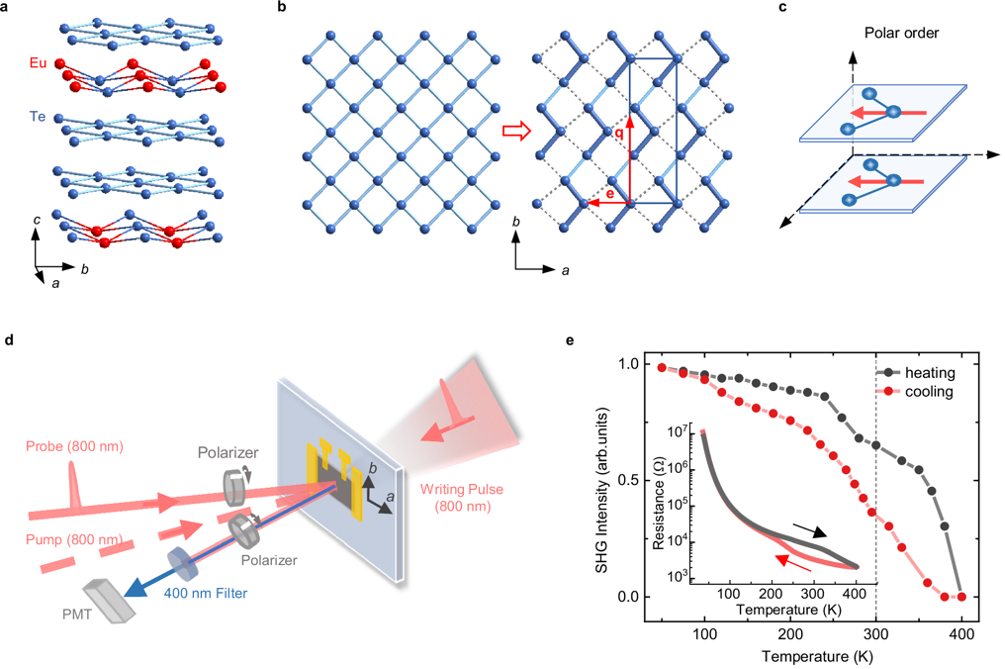Room-temperature non-volatile optical manipulation of polar order in a charge density wave
Nov 15, 2024
Schematic description of photo-manipulation of the polar electronic state in EuTe4.
Peking University, November 15, 2024: Addressing the challenge of controlling electronic states in materials, the scientific community has been exploring innovative methods. Recently, researchers from Peking University, led by Professor Nanlin Wang, in collaboration with Professor Qiaomei Liu and Associate Research Scientist Dong Wu, uncovered how ultrafast lasers can manipulate non-volatile, reversible control over the electronic polar states in the charge-density-wave material EuTe4 at room temperature. Their findings, entitled “Room-temperature non-volatile optical manipulation of polar order in a charge density wave” were published in Nature Communications (doi.org/10.1038/s41467-024-53323-0) on October 16, 2024.
Material Overview:
EuTe4 is a rare CDW semiconductor, first discovered by Dong Wu in 2019. It exhibits in-plane polarization due to the formation of regular Te trimers in its crystal structure. The crystal consists of Te-sheets separated by Eu-Te slabs and forms a 1a×3b×2c superlattice at room temperature. The material displays a polar order due to the in-phase stacking of polarization in adjacent Te-layers, breaking spatial inversion symmetry along the a-axis.
Key Findings:
The research team focused on reversible, non-volatile changes in second harmonic generation (SHG) signal and resistance at room temperature in the quasi-2D charge density wave (CDW) material EuTe4 using ultrafast lasers.
1. Key Experimental Results:
Using 800 nm ultrafast laser excitation and measuring SHG and resistance at room temperature:
- Single writing pulses can either enhance or suppress the SHG intensity and resistance in nm-thick EuTe4 samples.
- The system exhibits two distinct excitation regimes:
Weak regime (pulse fluence: 1.5 to 2.5 mJ/cm²): A hysteresis effect causes non-volatile changes in SHG and resistance.
Strong regime (pulse fluence: 4-5 mJ/cm²): A new non-volatile state is created, characterized by no SHG signal but a large increase in resistance. In this strong regime, a train of pulses induces a new polar state with low resistance and a unique SHG pattern.
2. Phase Inversion Mechanism:
The study suggests that the observed photo-induced changes reflect the reversible inversion of polarization in the Te-layers.
- The material's behavior mirrors an anharmonic two-level system, where:
Higher fluences excite states with weaker polarization.
- Lower fluences overcome shallow barriers and return the system to the polar phase with stronger polarization.
- Lattice distortion may be involved in the Strong regime, and further studies are needed to confirm this.
3. Theoretical Implications:
The material exhibits potential multiple polar phases due to its layered structure, and the overall polarity depends on the relative stacking order of the Te-layers. The study suggests the possibility of an antipolar phase with inversion symmetry, based on crystallographic modeling.
Written by: Akaash Babar
Edited by: Zhang Jiang
Source: School of Physics
